As someone who strongly supports family travel and backpacking, I’ve been asked how to make travel with really young kids light — or even possible. In response to the comments and the email sent our way, I’ve decided to come up with this rather lengthy guide on travelling with kids in the Philippines.
Also read: 25 Popular Street Food and Snacks to Try in The Philippines
First things first, let me emphasize that this is Philippine travel we are talking about. I am a huge fan of family travel and hiking blogs from the US, but they are far different from what we have experienced so far. Let’s just say the level of comfort for us here in the Philippines is much lower than theirs.
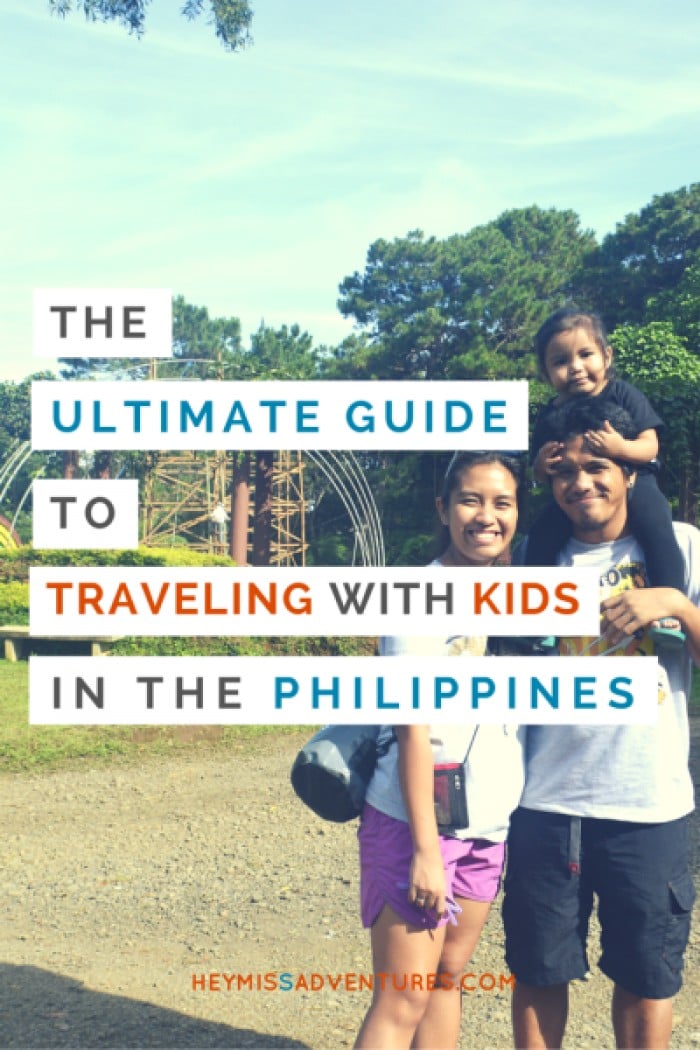
Also read: How to Travel Smart with Young Kids: Food, Fun and Family Bonding!
In addition, if you are a foreigner and are looking into visa requirements to stay in the Philippines, I suggest you check out DFA’s guideline requirements or other posts on the Internet as I won’t have any answer to that.
Now that’s all been cleared up, let’s start.
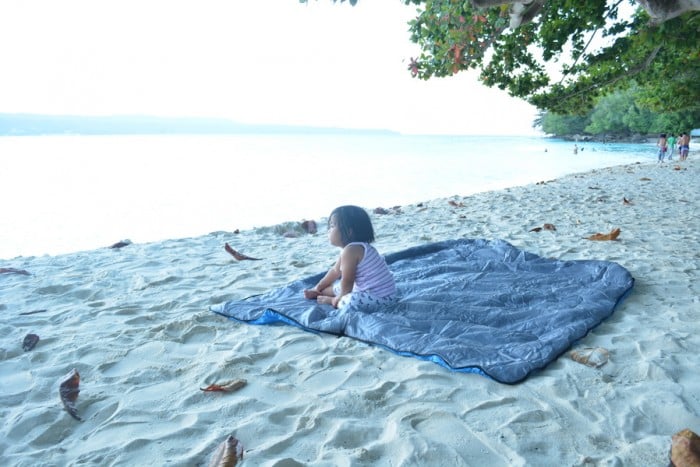
The reader who sent me an email told me that she will be travelling with her partner and 5-month-old daughter. When I posted it on my Facebook timeline to get advice from other people, one of the comments I got was to leave the infant behind and enjoy the time as a couple instead.
The family travel blogger that I am, I firmly said NO.
Why should you travel with kids?
I’ve once written how beneficial travel is for kids — and they are all based on our experience. As a recap, here are some extremely compelling reasons why you should bring your kids to your adventures:
- It introduces them to new things (and new places)
- It shows them the beauty of the world
- It provides a great learning experience
- It brings them closer to nature
- It teaches them to be flexible, adaptable, patient and independent
- It gives the chance to have exercise, breathe fresh air and have a digital detox
- It allows them to socialize with people from all walks of life, gender or age
In addition, parents can also greatly benefit from bringing their kids on travels. How?
- It teaches you to be patient (especially if you have a toddler who walks)
- It teaches you to be resourceful and adaptable (we’ve changed diapers upright, in the middle of a trail, under the light of the moon)
- It makes you stronger (because really, how long can you carry an 11kg toddler?)
- It teaches you to prioritize (should bring five feeding bottles or an extra pair of sneakers?)
- It forces you to disagree with the norms (why are you even bringing your poor little baby walking under the heat of the sun?!)
- It tells you that anything is possible
- and so many more…
But really, it brings us back to the issue on why you should even be bringing an infant to a beach, or anywhere else, when they can’t even do anything or remember the trip when they grow old?
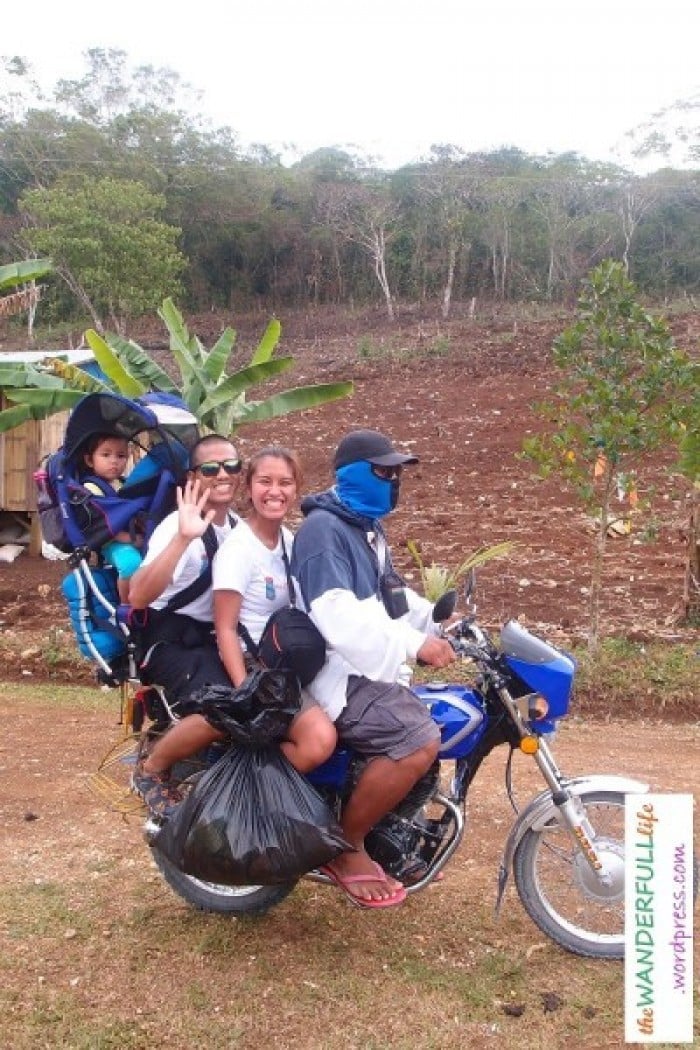 Image credit: The Wanderfull Life Website
Image credit: The Wanderfull Life Website
I tried to rack my brain for a personal answer — and I think I got it.
We started reading to our daughter when she was only a few months old. We could — and should — have done it much earlier though. She still loves it.
So what’s my point? The point is that building a habit/passion/love — such as a love for adventure and travel — takes time and starting it as early as possible is the most ideal. If we hadn’t started getting our daughter into a reading habit, convincing her to start in her toddler years will have proven to be very difficult (goldfish attention span) and making her love learning would be a futile attempt.
Preparations 101
Now that I’ve convinced you to bring your (young) kids along, it’s time to do some serious preparations. Here is an overview plus tips on how we do ours:
Also read: 10 Useless Things You Should Stop Packing For Your Trip
Pre-trip
Figure out where you are going and make bookings.
- Come up with an itinerary.
Remember to plan your trip on a much slower pace though. When we were still working in an office and had very limited days off, packing numerous destinations within a short amount of time was often my style. This proved to be a huge waste of time mostly spent on travel and, when you are backpacking and carrying a baby, extremely exhausting.
- Secure an accommodation to fit your family.
The truth is, I haven’t made any advanced bookings for most of the trips we did. It’s not for the faint-hearted, of course, and I suggest you don’t do it especially if you have really small kids. You can look for alternatives to keep your costs low or you can check out hotels, hostels or inns to see if they have family packages.
- Figure out how to do activities that don’t allow children.
The Puerto Princesa Underground River does not allow kids below two years to join the tour, but we went there with my parents. When our travels involve just the three of us, we often go for activities that will allow everyone to join. Or you could check to see if there is a nearby child care center (some hotels have this), if you have to do something without your kids.
- If you are going abroad, be sure to check in with your doctor first.
Some countries will require getting vaccine shots so make sure to have that to prevent any untoward incidences. Also make sure to have an ample supply of insect repellent especially if you are coming in to a tropical country like the Philippines.
- Set the right mood.
They say that kids thrive on routine — probably but they can be really easy to adapt, too. However, if you are too worried on how they would react to a new environment, it would help if you talked to them about the upcoming trip or let them watch movies (at a minimum) and read books on travel.
- Come up with a packing checklist.
It’s important to have a plan on what to pack because you want to make sure that you have all the necessities and not overpack as well. In addition, you have to make sure that you have all the things that you need, if anyone in your family has allergies or any special medications or needs.
During the trip
- Let go of your worries.
Our daughter was six months old when she took her first plane ride. I worried that she might get fussy on board but she slept the entire time. The change of pressure worries a lot of parents, but the secret to this is to feed the baby during landing and take off. Turbulence can also scare small kids — when our daughter does, we give her a tight hug, let her sleep it off, let her read the magazines or let her check out the sights outside the window.
- Keep all baby essentials in your small backpack (carry-on).
Refer below to see what you need to pack.
- Give them something to get busy with.
The biggest dread parents have when it comes to travelling with kids is having to face tantrums on the road. We found that distracting them with the scenery, with a book or with snacks changes their mood in just a snap.
- Bring water and snacks.
Because this can totally change a cranky kid.
- Car seats aren’t a requirement in the Philippines.
If you are a foreigner travelling with kids in the Philippines, you probably worry about car seats. They aren’t needed here — some drivers can go fast but with heavy traffic affecting major cities in the country, this will probably become the least of your worries.
- Use a child carrier.
Going hands-free is always awesome, plus it allows your child to sleep soundly and you can simply go about your trip without having to stop because of a nap.
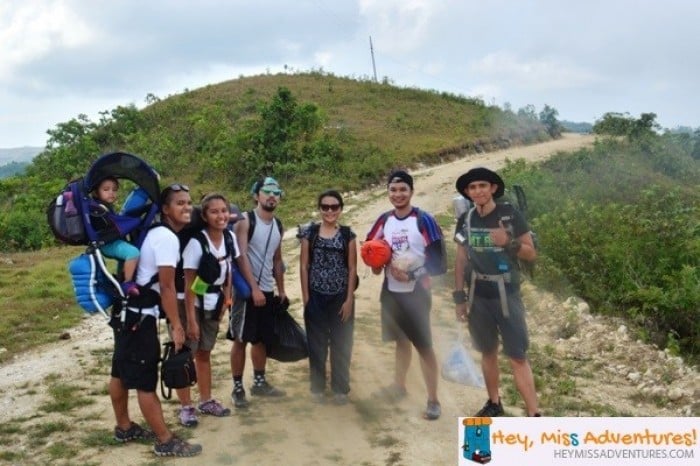
What should you pack?
The one thing I don’t like about travelling is packing. I hate having to choose which clothes to bring when they all look so cute and perfect for the destination. Haha. And: packing light when you have a bottle feeding kid is DIFFICULT.
But here are some essentials I believe should be on your checklist, based on experience.
- A child carrier.
We invested in a backpack child carrier which we can also use when hiking up mountains, but if you have a smaller child or frequent cities, I would recommend against it. You can choose soft-shelled infant carriers instead. Walking around hands-free allows you to go about as ‘normally’ as possible and allows your child to sleep uninterrupted without you having to stop.
- At least two feeding bottles and milk worth three feedings.
You’ll slash a lot of weight if you breastfeed. When we need to bring more formula, I often use a resealable Ziploc container and add in the scoop so I can refill the milk container even on the road — but make sure to keep your hands clean though.
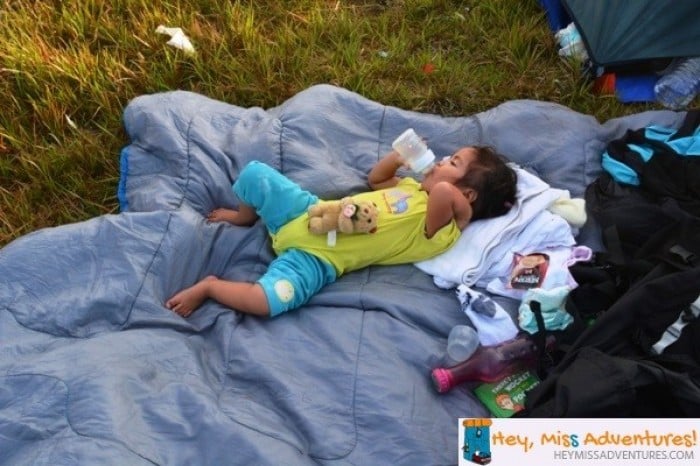
- Diapers.
The amount changes depending on the average times your baby changes or if you have an easy access to stores. In the Philippines, retail buying is available nearly everywhere. Cloth diapering is also awesome but I’m not sure how well that would go on the road as I haven’t tried it.
- A small book or toy.
We pack this up as a backup in case the daughter gets cranky but usually it isn’t necessary. Books or toys are useful when they start getting bored in the car or plane or when you have to keep them preoccupied while you finish off something (like cook or set up the tent).
- Water.
Planes allow you a max 100ML of water, sometimes a bit more, when you have an infant. On the road or on a hike, we usually bring 2L of water per adult plus at least two feedings worth of water for the child.
- Snacks.
These are also a life saver when you are on the road with a kid. It saves and keeps away the crankiness for both parent and child. We often go for biscuits for our daughter but when we are on a hike, we opt for energy bars.
- One change of clothes on your carry-on.
After all, who knows what incidents could happen on the plane? You’d want things to be just within reach, just in case.
- Wipes and alcohol.
They are useful everywhere. In case of a diaper blowup or if your tummy suddenly acts weird, at least you have an arsenal with you.
- Clothes.
Coming up with a clear formula on how much clothes to bring for your infant is tricky. They may be tiny but when you don’t hold yourself back, it can really add up. For short trips, I usually go for the number of days plus one (plus perhaps two pairs of sleeping wear). For longer trips, three day clothes and two sleepwear is a good formula — and this would be assuming you would wash your clothes in between. We did this during our 1-week stay in Davao City.
- Vitamins, medication, first aid.
If you could get smaller bottles (we often buy the biggest ones as they tend to be cheaper) then you can repack them and put it in your checked-in luggage (or carry-on, but keep it at 100ML). Or you could choose to buy them at the destination but if you go on a short trip, what happens to the unused ones?
- Toiletries.
Unless you are loyal to certain brands, like we are to Lactacyd, and find it difficult to buy it elsewhere, you could forego packing shampoos and soaps.
- Sun protection.
Whether you are going to the beach, mountain or around the city, putting on sunscreen for infants is VERY important. You can level-up the protection by bringing a wide-brimmed hat (not necessary with our backpack carrier) and/or a pair of sunglasses (love Babiators). I don’t mind my daughter wearing two-piece ensembles on the beach but you can also opt for rash guards and the like.
- Shoes.
Unless your kid is already walking, you don’t really need to bring any. With a toddler, we just go for one pair (which is already being worn) plus a pair of slippers. I guess that’s it. For infants, all they really need is a milk machine and something to keep them warm.
We don’t put much fuss with our toddler either. I used to put her on an all-organic diet which proved really hard and expensive here in the country. Right now, she just eats what adults eat — plus more vegetables and fruits.
Also read: How to Pack Light: 8 Innovative Gadgets to Save Space in Your Luggage
Light packing is really difficult but it all comes down to how well you can differentiate necessities versus nice-to-haves. If you can exchange your items for lighter but equally efficient alternatives then that would be awesome. I will be writing something on light and fast backpacking so watch out for that, too.
Don’t stress too much but make sure to keep all your items within the weight limit. Just enjoy the time you have with your family!
Top Family Destinations in the Philippines
When we plan out our travels, looking for ‘family friendly destinations’ never crosses my mind. I think that everywhere is a friendly place to bring children of any age. Okay, except for bars and those illegal places you should never get yourself in, as an adult, either.
Also read: 10 Family-Friendly Destinations in Asia for Relaxing Week-Long Getaways
So, here are some places we suggest that you go to as a family:
1. Puerto Princesa City
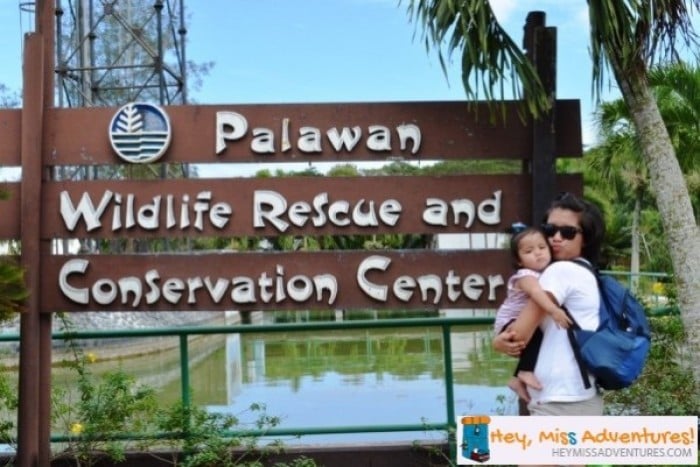
2. Davao City
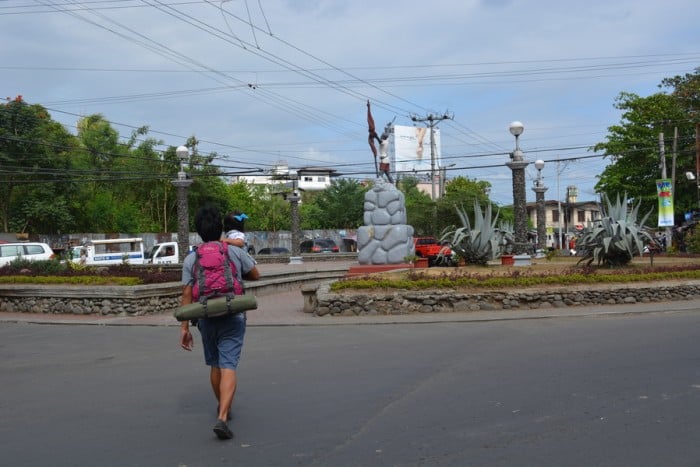
3. Cebu City
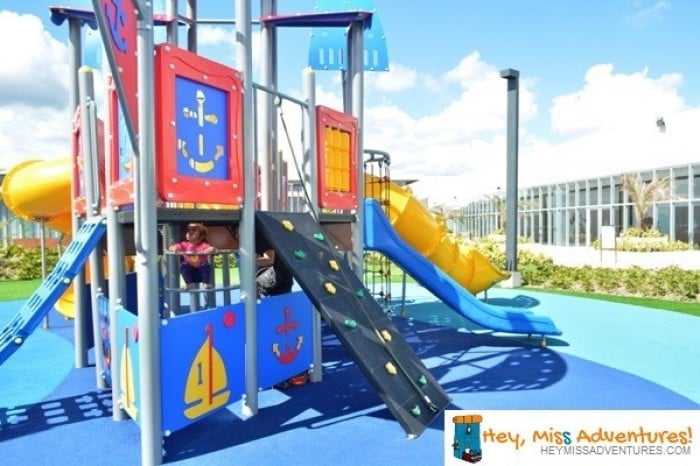
4. Metro Manila
5. Bantayan Island
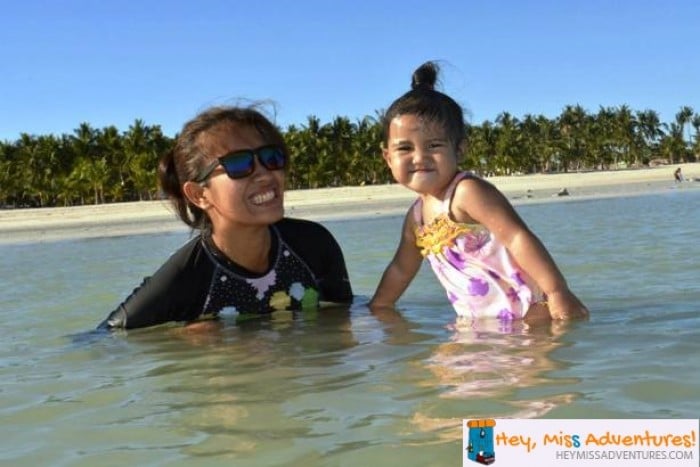
6. Camotes Island
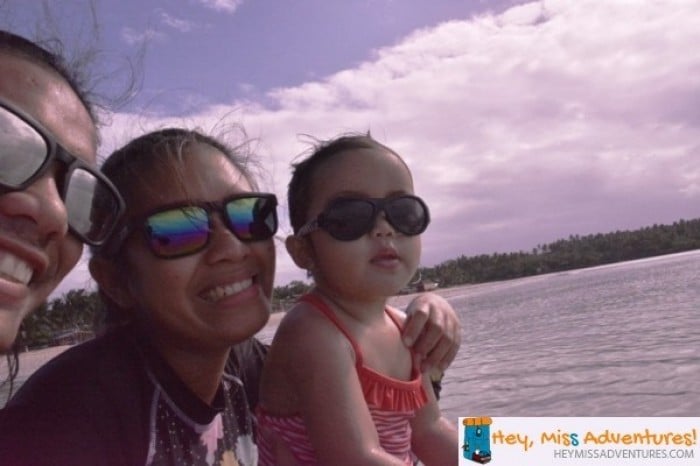
7. Kalanggaman Island

8. Hundred Islands
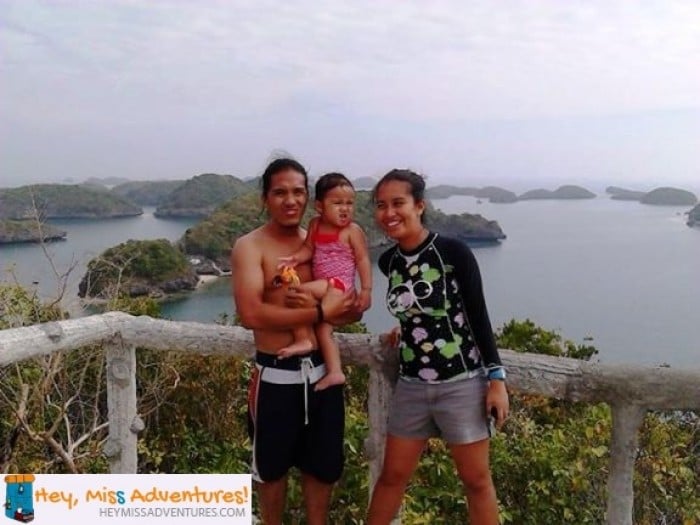
Whew. That was one exhaustive list. I’m feeling the travel itch right now.
Happy travels!
Contributed by Hey, Miss Adventures!




